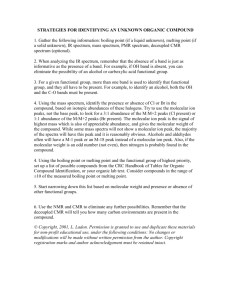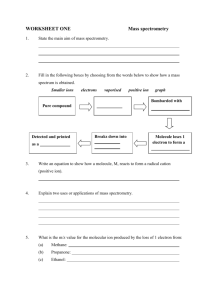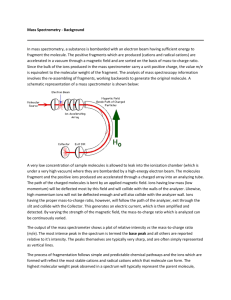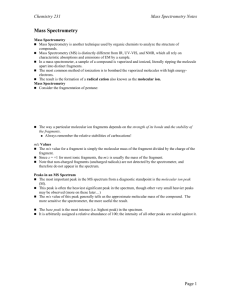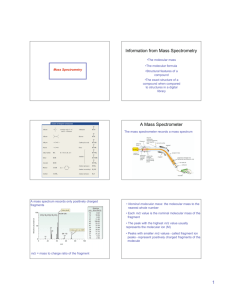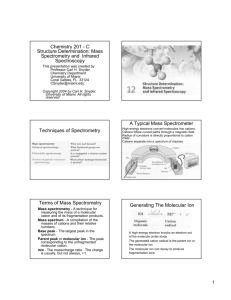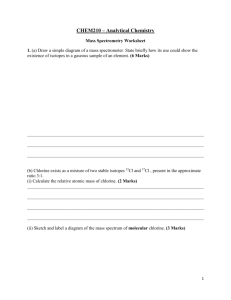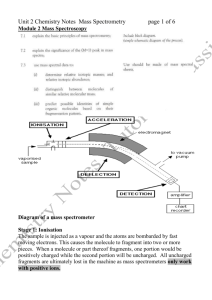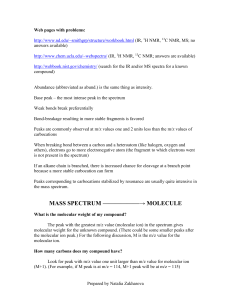File
advertisement
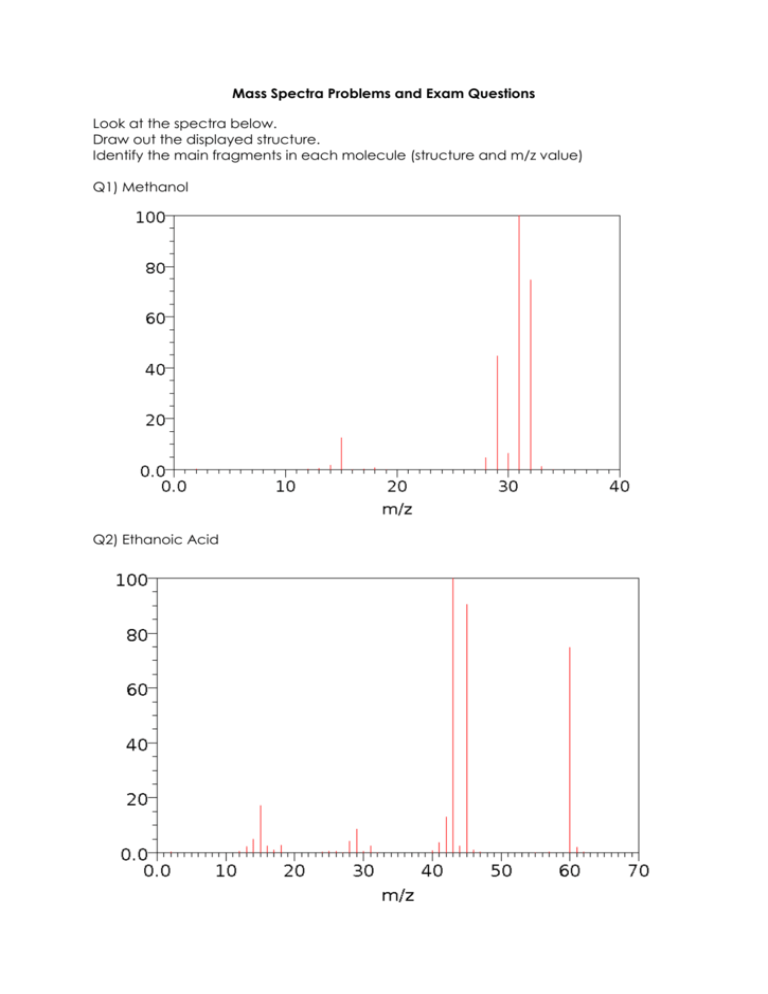
Mass Spectra Problems and Exam Questions Look at the spectra below. Draw out the displayed structure. Identify the main fragments in each molecule (structure and m/z value) Q1) Methanol Q2) Ethanoic Acid Q1. Q2. Compound U is shown below. (a) Name compound U. (1) (b) (i) State why the mass spectrum of U contains two molecular ion peaks. (ii) Give the m/z values of these two peaks. (2) In 2008, some food products containing pork were withdrawn from sale because tests showed that they contained amounts of compounds called dioxins many times greater than the recommended safe levels. Dioxins can be formed during the combustion of chlorine-containing compounds in waste incinerators. Dioxins are very unreactive compounds and can therefore remain in the environment and enter the food chain. Many dioxins are polychlorinated compounds such as tetrachlorodibenzodioxin (TCDD) shown below. In a study of the properties of dioxins, TCDD and other similar compounds were synthesised. The mixture of chlorinated compounds was then separated before each compound was identified by mass spectrometry. (a) The molecular formula of TCDD is C12H4O2Cl4 Chlorine exists as two isotopes 35Cl (75%) and 37Cl (25%). Deduce the number of molecular ion peaks in the mass spectrum of TCDD and calculate the m/z value of the most abundant molecular ion peak. Number of molecular ion peaks m/z value of the most abundant molecular ion peak (2) Q3. The mass spectrum of ethyl propanoate contains a major peak at m/z = 57. Write an equation showing the fragmentation of the molecular ion to form the species responsible for the peak at m/z = 57. Show the structure of this species in your answer. (2) (b) Draw the structure of another ester which is an isomer of ethyl propanoate and which gives a major peak at m/z = 71 in its mass spectrum. (1)
